Please find our most recent market review below. We hope these perspectives are valuable to you.
– The AdvicePeriod Team
Rate Cuts in View and “The Great Rotation”
Volatility is picking up and a rotation is underway
Value stocks and small caps show promise in July
Key Observations
- The S&P 500 rose another 1.2% in July, bringing its year-to-date return to 16.7%.
- Small-cap stocks gained 6.8% and have advanced 10%—nearly all in the month of July.
- Bonds rose 2.3%, adding to previous gains, and are up 1.61% YTD.
- International developed markets lagged the U.S. and have advanced 8.5% on the year.
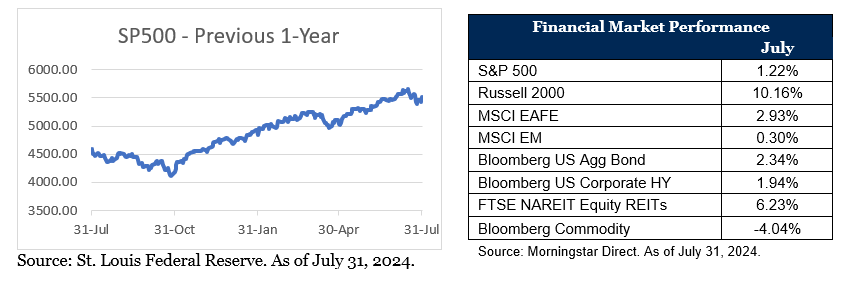
Market Recap
The U.S. stock market as measured by the S&P 500 Index performed well again in July, adding 1.22% to bring the total return to 16.70% for the year so far. Technology stocks lost some ground by declining 3.31%, making technology the only negative sector in July. A rotation out of large-cap and into smaller-cap and value stocks is underway. Small-cap stocks advanced 10.16% in July, nearly all of which came from small-cap value. Non-U.S. developed equities gained 2.9%, while emerging market stocks added 0.3%. The Bloomberg U.S. Aggregate Bond Index also had a positive return on the month, rising 2.34%, while the 10-year Treasury yield fell from 4.39% at the start of the month to 4.09% at month-end. Yields on the 2-year Treasury dropped in July, starting at 4.75% and falling to 4.29%.
Overall inflation dropped from 3.3% in May to 3.0% in June. More importantly, core inflation decreased to its lowest level since June 2023, coming in at 3.0%. The Federal Reserve’s dot plot (which is a chart of each Fed official’s short-term interest rate projections) currently sees the federal funds rate falling from 5.25%-5.50% to 3.00%-3.25% by 2026. Current economic projections put core inflation at 2.8% by year-end and forecast one rate cut this year followed by four in 2025 and four more in 2026, reducing current rates by 225 basis points in total. Very good news for economic growth potential over the next few years.
U.S. job growth met expectations in June, coming in at 206,000 new jobs added. However, due to revisions in April and May numbers, three-month average job growth declined to 177,000 new jobs—the slowest pace of job growth since the beginning of 2021. The unemployment rate rose to 4.1% in June compared to 4.0% in May. This marks the highest unemployment rate we have seen since 2021.
What Happens When the Fed Cuts Rates?
The last five years have been among the best of times for stock investors:
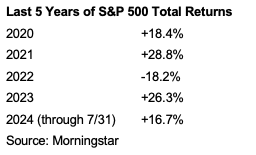
With the notable exception of 2022, it’s been pretty much a one-way street for the bulls. But what happens historically when the Fed begins a rate-cutting cycle? Since the year 1980, there have been 11 rate-cutting cycles. Given that we are approaching the start of another cycle, it might be prudent to see how investments have fared in the 12 months following the start of the first rate cut:

On average, even if the economy goes into a recession, the 12 months following the first rate cut have seen positive returns. Currently, gross domestic product is projected to end 2024 at around 2.6% but slow to 1.8% in 2025. Though this would indicate a slowing of economic growth, it does not necessarily mean that we will enter a recession.
One asset class that has had a rough couple of years relative to large-cap stocks is small-cap value. Flows to small-cap value have been negative this year as investors chase mega cap and technology sector returns. This proved to be a bad idea in July, as mega caps traded down as of month-end (as measured by the Russell Top 50 Index). Recently, though, propelled by potential Fed rate cuts, small-cap value stocks had a banner month, advancing over 12% in July alone (as measured by the Russell 2000 Value Index). Flows have started reversing back into value as some investors are now chasing small-cap outperformance. Some have termed this “The Great Rotation,” referring to small-cap and value stocks being back in favor. Whether this trend will continue and for how long is anyone’s guess, but the market now seems to be more confident that we will see rate cuts soon.
We believe that the best way to avoid underperformance due to chasing returns and potentially getting whipsawed by different sectors or cap sizes is to stick with an overall target asset allocation and stay diversified. No matter what the economy has in store for us, history shows that having a plan, being well diversified and sticking to your convictions tends to lead clients to their desired outcomes.
Disclosures:
This market commentary is meant for informational and educational purposes only and does not consider any individual personal considerations. As such, the information contained herein is not intended to be personal investment advice or recommendation. References to specific asset classes and securities are for illustrative purposes only and are not intended to be, and should not be interpreted as, recommendations to purchase or sell any securities or assets classes.
The commentary represents an assessment of the market environment through July 2024. The views and opinions expressed may change based on the market or other conditions. The forward-looking statements are based on certain assumptions, but there can be no assurance that forward-looking statements will materialize. This commentary was written and provided by an unaffiliated third party; we cannot guarantee the accuracy or completeness of any statements or data contained herein.
Indexes are unmanaged and cannot be directly invested into. Index performance includes reinvestment of dividends unless otherwise stated. Past performance is no indication of future results. Investing involves risk and the potential to lose principal.
Asset allocation and diversification strategies are used to help manage risk, they do not ensure a profit or protect against loss in declining markets.
AdvicePeriod is another business name and brand utilized by both Mariner, LLC and Mariner Platform Solutions, LLC, each of which is an SEC registered investment adviser. Registration of an investment adviser does not imply a certain level of skill or training. Each firm is in compliance with the current notice filing requirements imposed upon SEC registered investment advisers by those states in which each firm maintains clients. Each firm may only transact business in those states in which it is notice filed or qualifies for an exemption or exclusion from notice filing requirements. Any subsequent, direct communication by an advisor with a prospective client shall be conducted by a representative that is either registered or qualifies for an exemption or exclusion from registration in the state where the prospective client resides. For additional information about Mariner, LLC or Mariner Platform Solutions, LLC, including fees and services, please contact us utilizing the contact information provided herein or refer to the Investment Adviser Public Disclosure website (www.adviserinfo.sec.gov). Please read the disclosure statement carefully before you invest or send money.
For additional information as to which entity your adviser is registered as an investment adviser representative, please refer to the Investment Adviser Public Disclosure website (www.adviserinfo.sec.gov) or the Form ADV 2B provided to you. Investment adviser representatives of Mariner, LLC dba Mariner Wealth Advisors and dba AdvicePeriod are generally employed by Mariner Wealth Advisors, LLC. Investment adviser representatives of Mariner Platform Solutions, LLC dba AdvicePeriod, are independent contractors.
Index Definitions: The S&P 500 is a capitalization-weighted index designed to measure the performance of the broad domestic economy through changes in the aggregate market value of 500 stocks representing all major industries. Russell 2000 consists of the 2,000 smallest U.S. companies in the Russell 3000 index. MSCI EAFE is an equity index which captures large and mid-cap representation across Developed Markets countries around the world, excluding the U.S. and Canada. The index covers approximately 85% of the free float-adjusted market capitalization in each country. MSCI Emerging Markets captures large and mid-cap representation across Emerging Markets countries. The index covers approximately 85% of the free-float adjusted market capitalization in each country. Bloomberg U.S. Aggregate Index covers the U.S. investment grade fixed rate bond market, with index components for government and corporate securities, mortgage pass-through securities, and asset-backed securities. Bloomberg U.S. Corporate High Yield Index covers the universe of fixed rate, non-investment grade debt. Eurobonds and debt issues from countries designated as emerging markets (sovereign rating of Baa1/BBB+/BBB+ and below using the middle of Moody’s, S&P, and Fitch) are excluded, but Canadian and global bonds (SEC registered) of issuers in non-EMG countries are included. FTSE NAREIT Equity REITs Index contains all Equity REITs not designed as Timber REITs or Infrastructure REITs. Bloomberg Commodity Index is calculated on an excess return basis and reflects commodity futures price movements. The index rebalances annually weighted 2/3 by trading volume, and 1/3 by world production and weight-caps are applied at the commodity, sector, and group level for diversification. Russell 2000 Value Index tracks the performance of Russell 2000 companies with lower price-to-book ratios and lower forecasted growth values. Russell Top 50 Index also known as the Russell Top 50 Mega Cap is a stock market index that measures the performance of the largest companies in the Russell 3000 Index.
Does past performance matter?
Major Market Index Returns
Period Ending 8/1/2024
Multi-year returns are annualized.

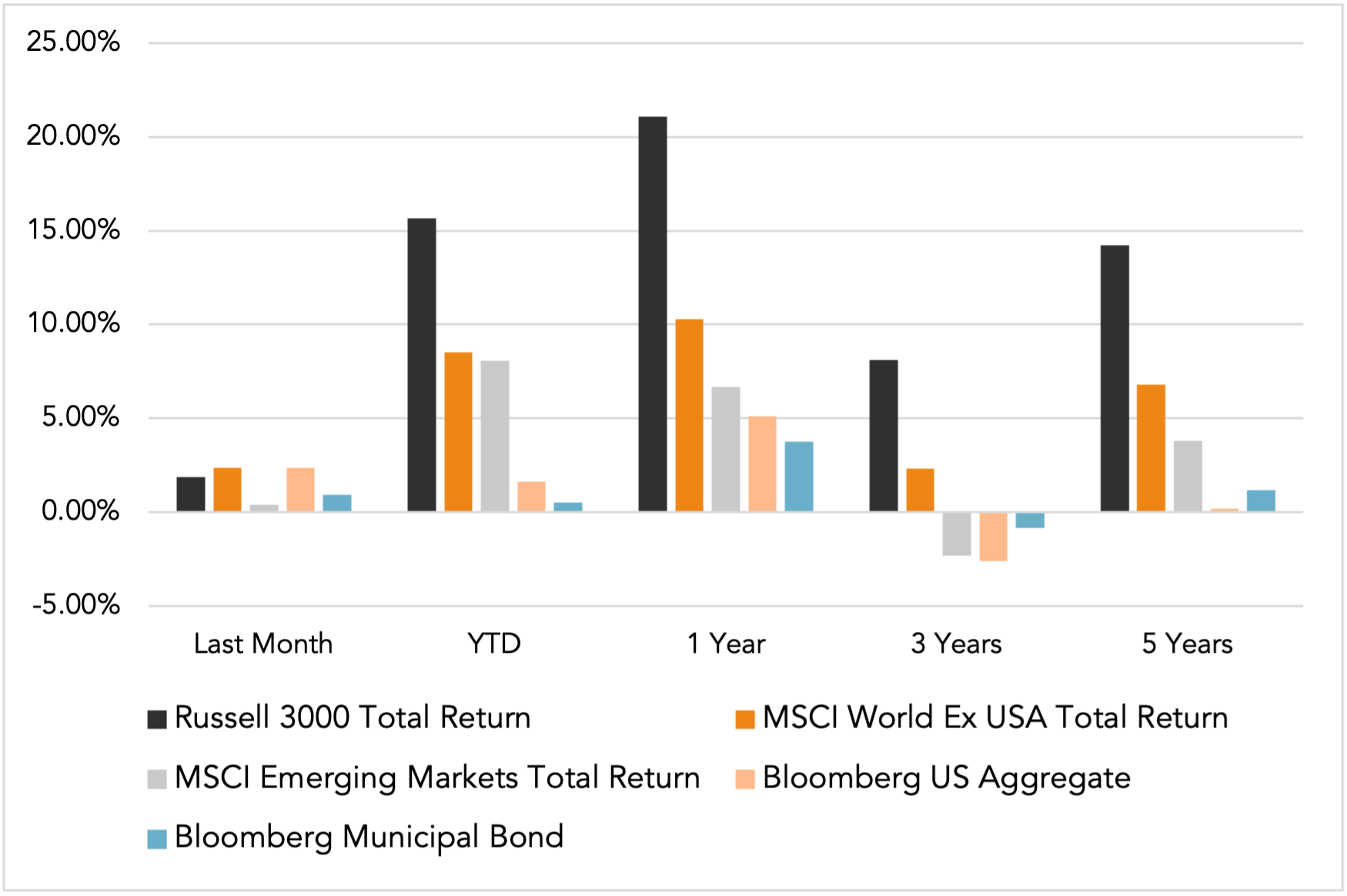
Mix Index Returns
Global Equity / US Taxable Bonds

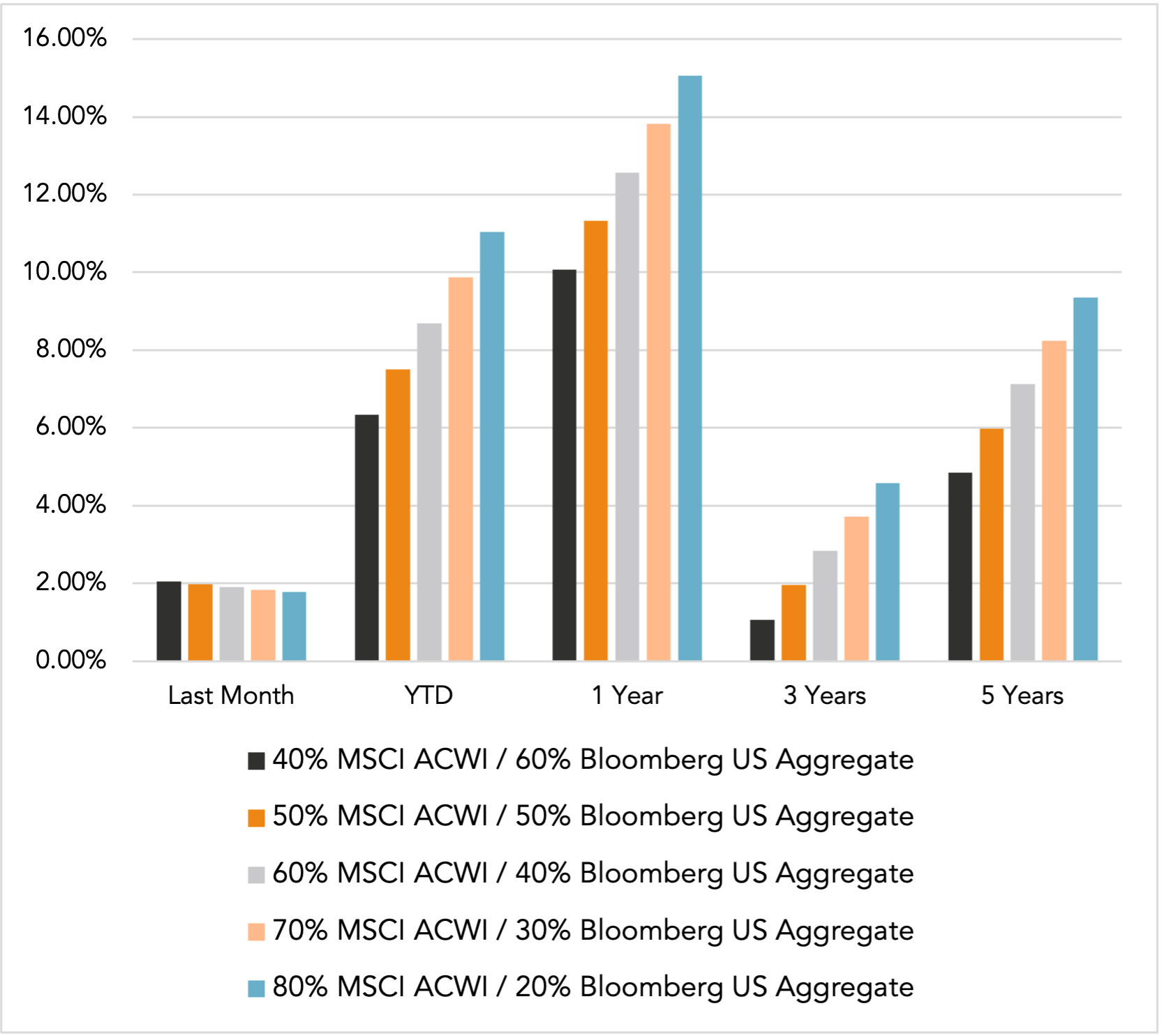
Indexes are unmanaged and cannot be directly invested into. Past performance is no indication of future results. Investing involves risk and the potential to lose principal.
The Russell 3000 Index is a United States market index that tracks the 3000 largest companies. MSCI Emerging Markets Index is a broad market cap-weighted Index showing the performance of equities across 23 emerging market countries defined as emerging markets by MSCI. MSCI ACWI ex-U.S. Index is a free-float adjusted market capitalization-weighted index that is designed to measure the equity market performance of developed and emerging markets excluding companies based in the United States. Bloomberg U.S. Aggregate Bond Index represents the investment-grade, U.S. dollar-denominated, fixed-rate taxable bond market, including Treasuries, government-related and corporate securities, as well as mortgage and asset-backed securities. Bloomberg Municipal Index is the US Municipal Index that covers the US dollar-denominated long-term tax-exempt bond market. The index has four main sectors: state and local general obligation bonds, revenue bonds, insured bonds, and prerefunded bonds.

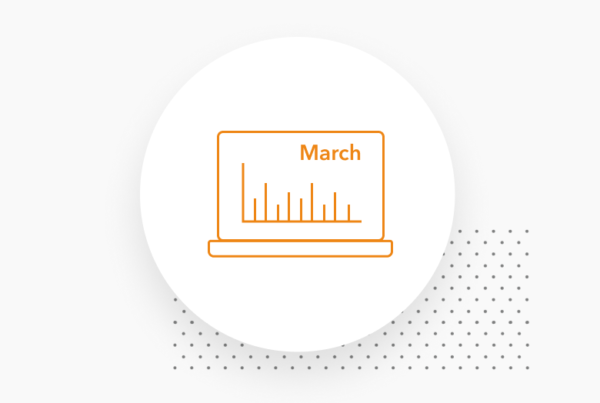
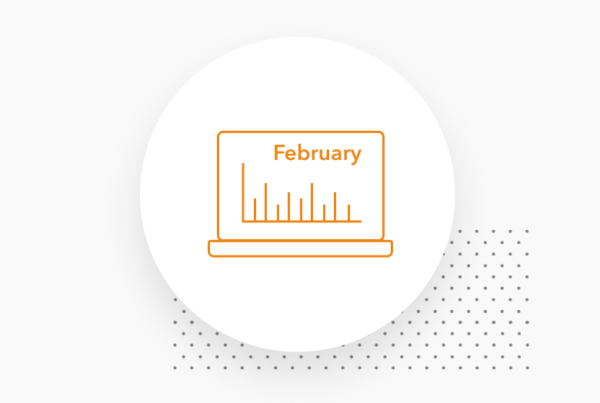

Market Update: March 2025 In Review